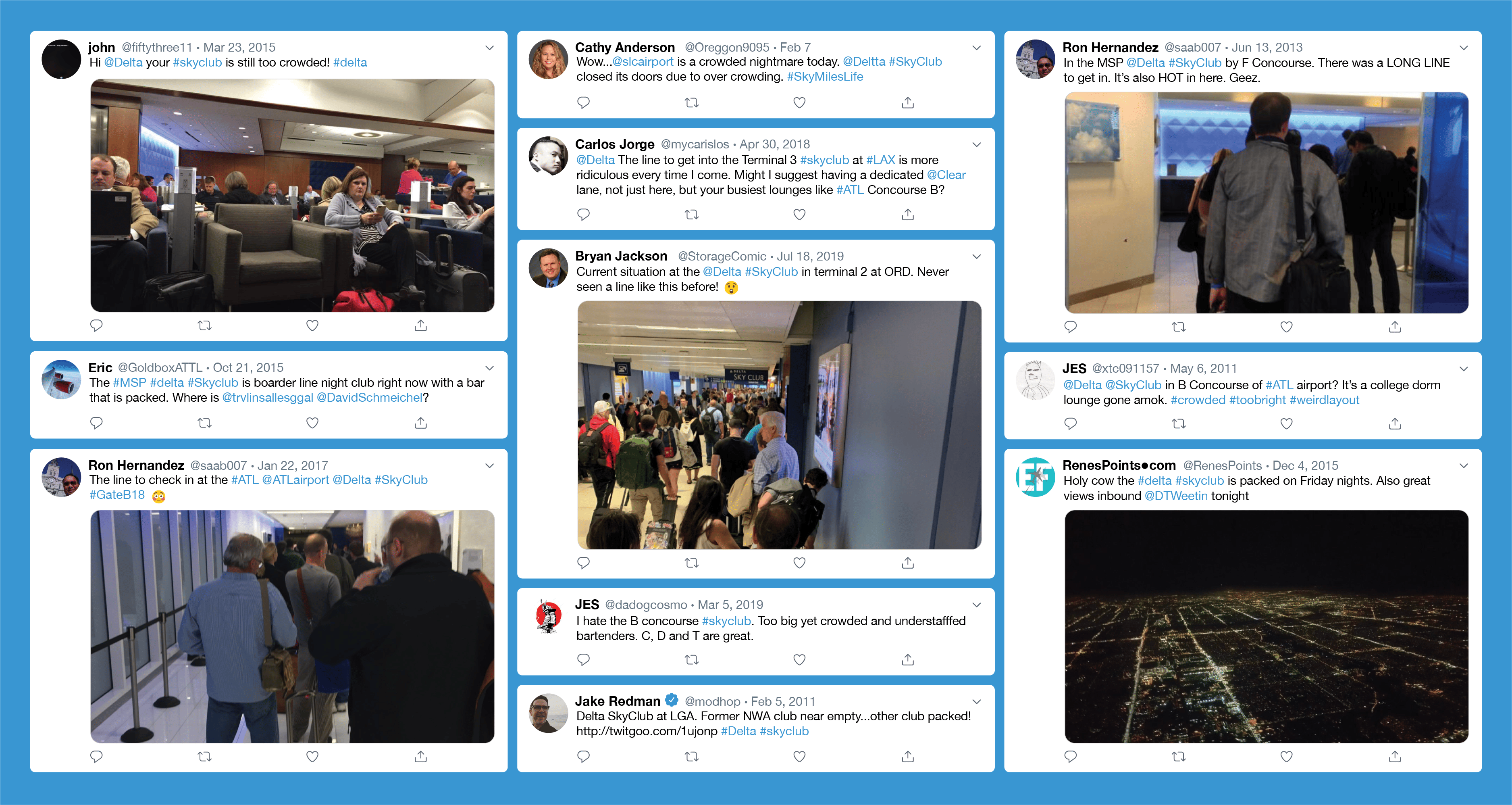"Overcrowding hurts our NPS."

What can we solve?
The problem, according to Delta’s President and COO Glen Hauenstein, is this: “When Delta Sky Clubs are too crowded, guests complain about it, and it colors their overall travel experience. It’s the number one driver of NPS. Let’s fix that.”
If clubs are too crowded, that means there are too many guests, not enough space, or both. The challenge is that we can’t make the clubs larger. Nor can we reduce the number of members. So what can we do?
There had to be another option, so I traveled the world to find out.

Image © Delta
Interviews
I visited 22 Delta Sky Clubs in 7 states and 2 countries. My research included conversations with over 50 employees and 63 guests. The goal was to understand why clubs are crowded and how it affects guests and employees.













